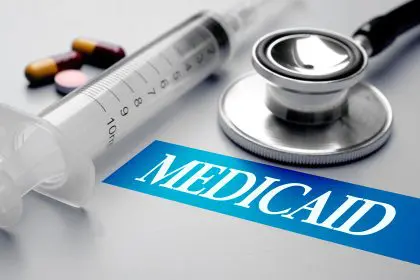Reproductive Rights in the Modern Era
The intersection of healthcare, politics, and personal autonomy continues to challenge fundamental understandings of abortion rights, particularly in the context of reproductive healthcare. As national conversations intensify and legal battles unfold, the debate over abortion rights remains a divisive issue, with stark differences in how states approach reproductive healthcare. Medication abortion, a key component of this discussion, offers a non-invasive method to terminate a pregnancy but is often subject to varying regulations and restrictions depending on the state. As individuals seek comprehensive insights into medication abortion, they must navigate a complex web of healthcare options, legal frameworks, and societal implications, all of which play a crucial role in shaping access to reproductive choices and personal autonomy.
Legal and Medical Landscape
Reproductive care indicators
Medication abortion illustrates the complexities inherent in reproductive healthcare today, as access is heavily influenced by state-specific laws. These legal variances create disparities in availability, depending on where a person lives. Adding to this complexity is a regulatory framework involving both state and federal policies, which can lead to challenging, often contradictory, guidelines for healthcare providers and patients alike. Medical safety protocols are also crucial in this context, requiring rigorous adherence to ensure that medication abortion is administered safely and effectively.
Furthermore, individuals face significant challenges related to personal healthcare autonomy, as restrictive policies can limit their ability to make independent health decisions. The landscape is further complicated by rapidly shifting legislative environments; reproductive rights are continually evolving, and frequent legal changes make it essential for individuals and providers to stay informed about the latest regulations and access points.
Medication storage and preservation
Proper storage plays a vital role in ensuring the effectiveness and longevity of reproductive medications. For instance, medications like mifepristone have a typical shelf life of five years when stored under recommended conditions. It’s important to check expiration dates regularly, as using expired medication can compromise both its safety and effectiveness.
Maintaining the appropriate storage conditions is key; medications should be kept in cool, dry areas to preserve their potency. Additionally, it’s crucial to understand how factors like light and heat exposure can degrade the medication, reducing its efficacy. To ensure optimal preservation, consulting healthcare providers for guidance on proper medication management and storage is highly recommended.
Navigating legal complexities
The regulatory landscape for reproductive healthcare is complex and can be difficult to navigate. State-specific regulations vary widely, with some states enacting laws that protect access to services, while others impose restrictions that limit options for individuals. Protective states have policies that actively support accessible reproductive healthcare, ensuring that residents can access necessary services without undue barriers.
On the other hand, states with restrictive legislative frameworks impose significant limitations on reproductive healthcare, particularly abortion access, affecting the choices available to their residents. Ongoing legal battles over reproductive rights, as well as frequent legislative changes, create an unpredictable environment where access to medication abortion can shift rapidly. Additionally, potential federal-level interventions could further influence reproductive health laws across the country, potentially standardizing or altering state regulations.
Strategic healthcare navigation
Developing an informed, personalized approach to reproductive health is essential for improving access to care and ensuring better understanding of available options. A personal health assessment is an important first step, allowing individuals to evaluate their specific reproductive needs and make well-informed decisions. A comprehensive reproductive health evaluation can provide a clear picture of one’s overall health, offering insights into the available healthcare choices, including options for abortion if needed.
Understanding individual healthcare needs is key to tailoring decisions that align with personal goals and constraints, whether related to medical history, family planning, or the decision to pursue abortion. Exploring multiple healthcare options, such as different providers and support systems, gives individuals the flexibility to choose the best fit for their situation. Finally, developing personalized medical strategies—taking into account both legal and medical considerations—ensures a continuous, effective approach to reproductive care. This holistic plan can adapt to changing needs and maintain long-term health goals.
Technological and medical innovations
Modern advancements are transforming reproductive healthcare access and delivery:
- Telehealth consultations: Remote consultations increase access, especially in restrictive states.
- Advanced medication delivery systems: New methods simplify and expedite delivery for patients.
- Comprehensive patient support networks: Resources like hotlines and virtual support groups provide guidance.
- Innovative medical technologies: Developments in medical devices and treatment processes improve care quality.
- Personalized healthcare approaches: Healthcare that considers personal context and preferences empowers patients.
Ethical and personal considerations
When making reproductive healthcare choices, individuals often consider a range of ethical and personal factors:
- Personal autonomy: Preserving the right to make individual health choices is a priority.
- Medical safety: Ensuring treatments are safe and evidence-based is central.
- Ethical considerations: Each person weighs their moral beliefs in choosing reproductive healthcare.
- Individual circumstances: Personal factors like health history and family planning goals inform decisions.
- Comprehensive healthcare understanding: Being well-informed supports better decision-making.
Psychological and social dimensions
Reproductive healthcare decisions extend beyond physical health, as emotional and social factors often play a significant role. Mental health considerations, for example, are crucial in shaping decisions, as emotional well-being can influence one’s approach to reproductive care, including the decision to seek abortion. The emotional impact of an unintended pregnancy or the need for an abortion can affect mental health, making it essential to address both aspects in healthcare planning.
Social support systems, including family, friends, and communities, also provide essential backing, offering emotional support and practical assistance during decision-making, particularly when it comes to sensitive topics like abortion. Personal empowerment is another key factor; when individuals are well-informed about their healthcare options, including abortion, they feel a greater sense of control and confidence in their decisions. Healthcare accessibility and affordability are also important, as the ability to access services directly impacts decision-making. Finally, understanding individual rights protection is vital, as knowing one’s legal rights not only ensures autonomy but also reduces stress and fear about potential barriers to care, such as restrictions on abortion access.
Comprehensive healthcare framework
A holistic approach to reproductive health integrates various essential components that work together to ensure comprehensive care. Personalized medical approaches take into account an individual’s specific health needs and circumstances, allowing for tailored care plans that best suit their situation. Professional healthcare guidance from qualified providers ensures that medical decisions are safe, well-informed, and in line with best practices.
Understanding comprehensive rights is crucial, as it helps individuals make decisions based on a clear awareness of their legal entitlements, which enhances their autonomy. Adaptive healthcare strategies are also necessary, as they allow individuals to remain flexible in the face of changing laws and policies, ensuring continuity of care. Lastly, individual empowerment mechanisms, such as self-advocacy, help individuals navigate their healthcare choices with confidence, fostering resilience and the ability to stand firm in making informed decisions.
Emerging healthcare perspectives
New studies are continually informing the reproductive health landscape, with findings pointing to broader impacts:
- Healthcare policy evolution: Shifts in policies reflect societal and scientific changes.
- Individual rights protection: Legal developments help safeguard healthcare autonomy.
- Medical accessibility improvements: Efforts are underway to make healthcare more universally accessible.
- Regulatory environment adaptations: Changes in law and regulation impact care options.
- Social dynamics transformation: Social attitudes toward reproductive health are evolving, reshaping accessibility and support.
Conclusion
Reproductive healthcare represents a complex intersection of personal autonomy, medical science, and legislative frameworks. The landscape continues to evolve, requiring individuals to remain informed, adaptable, and proactive in managing their healthcare choices.
Key Takeaways:
- Stay informed about local regulations
- Consult healthcare professionals
- Understand personal healthcare options
- Protect individual reproductive rights
- Maintain a comprehensive approach to healthcare decision-making
Individuals must approach reproductive healthcare with careful consideration, combining personal insight, medical expertise, and an understanding of the broader legal and social context.












